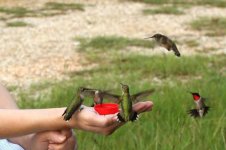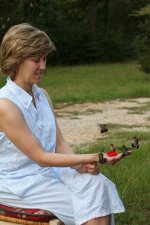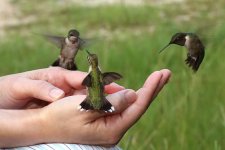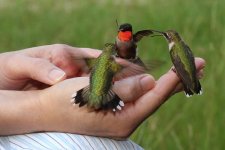Greetings from Iowa; Some thoughts on your feeder visitors. The Brown-Headed Cowbird is a year round bird in your local. Remember this species is a true parasitic bird, so if I had my druthers, I wouldn't feed it at all. But that is only my opinion. It has it's place in the grand scheme of things...somehow. Your Black-Headed Grosbeak could be a summer resident but it is more likely a migrant. They winter in southern Mexico, and breed north of you in the cool forests and mountains to the north. But I wouldn't rule out a summer bird from time to time. The Hooded Oriole might be enticed to stay over if there is a nice supply of nectar and fruit like orange slices or grape jelly, etc. available. A few do stick around anyway. This bird winters in southern Mexico but is a summer resident and fairly common around you so leave your oriole nectar feeder out year round. Who knows? I would. The Western Tanager is probably a migrant like the Grosbeak. They breed north and east of you in the mountains and forests. But, it could also be a summer resident as some are found around you during the summer if habitat is friendly. The Lazuli Bunting is probably a summer resident along the coast, and a migrant further inland. It may very well be at your feeders during the summer months. But not in the winter. It winters from extreme southern Arizona down the coast of the Gulf of California. Lastly, the White-Crowned Sparrow is a winter bird. In your location, if it were me, I would split my feeders three ways year round: Combination oriole nectar feeder that has a place for orange slices and jelly bowl. This will attract the tanager also. Seed feeders, white proso millet for the sparrows, quail and doves in a ground feeder, black oil sunflower mixed with safflower in other seed feeders for your Grosbeaks, Buntings, finches, etc., and lastly, put up hummingbird feeders. Plant some bird friendly shrubs or ornamental trees, put up nesting boxes and your yard will be the "kitchen" for any bird in your neighborhood. I hope this helps. Remember, it takes birds to attract birds. And if all else fails, just do like this lady does in the photo taken back east in Iowa, species = Ruby-Throated Hummingbird.
Bird on!
Tom :t:







